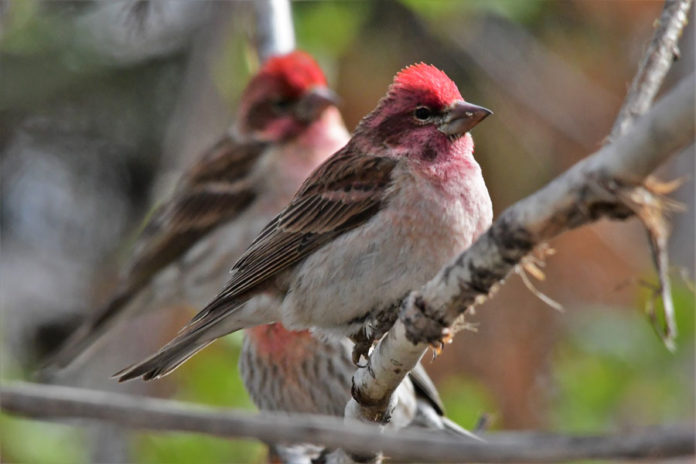EDITOR’S NOTE: This article was originally published on May 9, 2020.
The chirping sounds coming from the trees in my backyard was unmistakable — the evening grosbeaks had arrived. About 30 of them with their turquoise bills husking out the sunflower seeds quickly emptied out both feeders.
Later that day, the Cassin’s finches with their bright red mullocks arrived and it was time to buy another 40 pounds of black-oil sunflower seeds.
Two days later, the few Pine siskin numbers had exploded with the little brown birds dominating the American goldfinch at the thistle (niger) seed socks. Expecting a few hummingbirds and fruit-eating Bullock’s orioles to show up, I put out the hummingbird feeders and scattered oranges cut in half around the yard. It did not take long before a Bullock’s snuck in to feed on one of the oranges.
This week on a trip to Henrys Lake to check out the ice and to deliver some fishing flies to Drift Lodge, I made a stop at Harriman Park. At the fishing parking lot at Last Chance, a large flock of Yellow-rumped warblers, including the sub-specie, Myrtle, were feeding on the hatching insects. Even a few Yellow warblers were busy getting their bellies full.
This is the time to attract colorful birds into your yard and area. The migration of warblers and other colorful birds are looking for a nutritious handout in their northern migration during the next two to three weeks. Now is a good time to get the feeders recharged or put out. Water is also very important because they need water, shelter and food to maintain their fat reserves as they migrate. With the cooler night temperatures, the natural foods are not developing quickly, so food stations will be critical for their migration.
I would put out these feeders in the next few days. Birds use storm systems to travel and, oftentimes, birds strange to our area will get separated in a storm and will be “blown” off course. With all the rain and wind predicted this next week, we should see some strange birds come in before next weekend. Last season, I had a Rose-breasted grosbeak show up with a flock of Black-headed grosbeaks, a very rare sighting in Rexburg. Several years ago, I found a summer tanager at Market Lake that stayed there for several days.
Probably the best food for the greatest kinds of birds are the black-oil sunflower seeds either in the shells or just the seeds if you do not want to deal with the mess caused by the shells.
Next, I love the niger seeds in the seed socks for the finch and siskin families. They love them. A lot of the fruit-eating birds like orioles and hummingbirds love the sugar-water feeders or oranges cut in half.
Last, I also like peanut-flavored suet cakes for woodpeckers, chickadees and other nut-eating birds. Be aware that starlings also love the suet and they will gobble it down in a hurry.
Insect-eating birds are not drawn to feeders, but a few birdhouses built for swallows and house wrens will attract them to help you get rid of the nasty mosquitos and gnats that bother you. In recent years, we have had flycatchers and Western kingbirds nest in our backyard to help control the insects.
I would like to encourage anyone who has a weird bird show up in their yard to contact me through EastIdahoNews.com so it can be documented. I would also like to hear about some of the experiences that you have while attracting birds into your yard.
I hope you have a great time watching not only the colors of the flowers, but also the number of colorful birds you observe.

Credit: Source link






























